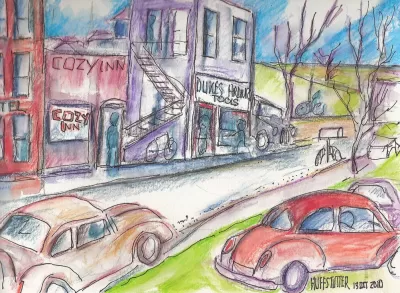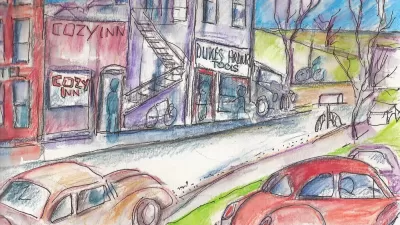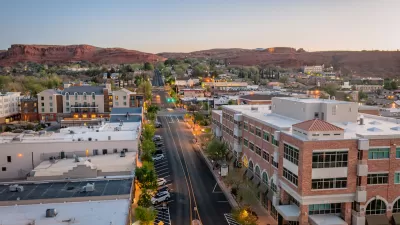A burgeoning revitalization model uses the arts as an opportunity to bring in outside money while hiring local.

In the search for new models to drive rural economic development, Minnesota nonprofit Springboard for the Arts is seeding creative economies in small cities. It's a model that the organization hopes to take national with a workbook currently in development, Star Tribune reports.
Based in St. Paul, Springboard uses federal grant money to promote the arts and train local artists. Star Tribune covers the organization's outpost in Fergus Falls, a city of 13,400 reeling from the closure of the state's largest mental hospital, a major local employer and resource. Now, the facility's former campus has become an arts hub with galleries, youth classes, and creative development programs. "Newly renovated apartments" also host 20-30 artists-in-residence a year.
Even when the arts don't directly create jobs, the organization argues, they contribute to quality of life and attract new residents to fill jobs—including young people who had previously moved away to larger cities.
A 2017 report shows that Fergus Falls has an outsized arts scene. While the city's population ranked 13th among participating Minnesota cities, the size of its arts economy ranked ninth — ahead of St. Louis Park, Northfield and Red Wing, according to a statewide report from the Minnesota Citizens for the Arts. That report, which counted spending by arts organizations and audiences, tallied the economic impact of Fergus Falls’ arts scene at $2.96 million, with state and local money contributing $271,000 toward that total.
FULL STORY: Fergus Falls strives to become national model with its thriving rural arts scene

Study: Maui’s Plan to Convert Vacation Rentals to Long-Term Housing Could Cause Nearly $1 Billion Economic Loss
The plan would reduce visitor accommodation by 25,% resulting in 1,900 jobs lost.

North Texas Transit Leaders Tout Benefits of TOD for Growing Region
At a summit focused on transit-oriented development, policymakers discussed how North Texas’ expanded light rail system can serve as a tool for economic growth.

Why Should We Subsidize Public Transportation?
Many public transit agencies face financial stress due to rising costs, declining fare revenue, and declining subsidies. Transit advocates must provide a strong business case for increasing public transit funding.

How to Make US Trains Faster
Changes to boarding platforms and a switch to electric trains could improve U.S. passenger rail service without the added cost of high-speed rail.

Columbia’s Revitalized ‘Loop’ Is a Hub for Local Entrepreneurs
A focus on small businesses is helping a commercial corridor in Columbia, Missouri thrive.

Invasive Insect Threatens Minnesota’s Ash Forests
The Emerald Ash Borer is a rapidly spreading invasive pest threatening Minnesota’s ash trees, and homeowners are encouraged to plant diverse replacement species, avoid moving ash firewood, and monitor for signs of infestation.
Urban Design for Planners 1: Software Tools
This six-course series explores essential urban design concepts using open source software and equips planners with the tools they need to participate fully in the urban design process.
Planning for Universal Design
Learn the tools for implementing Universal Design in planning regulations.
Ascent Environmental
Borough of Carlisle
Institute for Housing and Urban Development Studies (IHS)
City of Grandview
Harvard GSD Executive Education
Toledo-Lucas County Plan Commissions
Salt Lake City
NYU Wagner Graduate School of Public Service





























